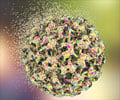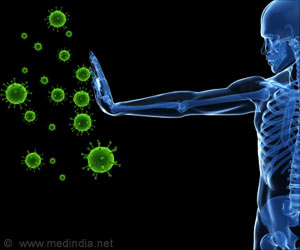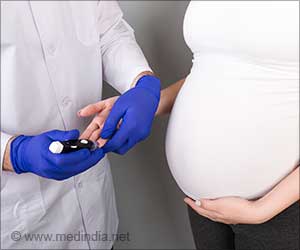It would be a shame if the negative focus on Gardasil, hampered the efforts to reach this HPV vaccine to millions of women who would otherwise succumb to cervical cancer.
When it comes to the health of their children, parents have one simple desire: to protect them from as many diseases as possible. So when a vaccine with irrefutable benefits is introduced into the market, most of us welcome it with open arms. Our enthusiasm can sometimes be dampened, however, by the flurry of negative stories that often follow, leading to feelings of fear, doubt and apprehension.
Such is the case with Gardasil, the vaccine against the most common sexually transmitted virus - the Human Papilloma Virus (HPV). The vaccine prevents against the majority of cervical cancers and several other HPV -related diseases. As it is preventive in nature, it is recommended for routine immunization of girls between the ages of 11-12 years (before sexual debut) and catch –up through age 26 years.In spite of its attractive benefits, the vaccine has been mired in controversies that have received extensive coverage in the media, including those that pit scientific merits against moral values. Our main focus here will be on the more quantifiable scientific reports on the safety profile of the vaccine.
Green Signal
For those parents who are concerned about the “newness” of the vaccine, recent news from the CDC on October 22, 2008 offers much needed solace. Reports presented by four different sources to the Advisory Committee on Immunization Practices (ACIP), an independent panel of experts that advises the CDC on vaccine policies, found that there were no signals to link Gardasil to any of the serious adverse effects that lately have been publicized in the media. Additionally, no link was found between the vaccine and birth defects, miscarriages, or fetal and infant deaths.Catch 22
If this is true, then why are there so many stories that continue to allude to its dangers? Shouldn’t everyone be in unison to embrace this vaccine? The reason these doubts continue to plague us is because all these stories on the vaccine’s adverse effects are not entirely false.For the consumer
So how can consumers differentiate between the two so as to make the best-informed decision before vaccinating? In order to do that, it is helpful to understand the difference between a side effect (caused directly from the vaccine) and an adverse effect (may or may not be related to the vaccine). In other words, an adverse effect can be a sheer coincidence and have the same statistical occurrence as the population at large that has not been vaccinated. Now, let’s look at what some of the side effects and adverse effects of the vaccine are.Side Effects
The two most common side effects of Gardasil thar are reported are pain at the site of injection (nearly 80%), followed by swelling and redness (around 25%). These are temporary symptoms and resolve within a few days in most cases.Adverse effects
Some of the adverse effects of Gardasil are listed below-a) Fainting spells: Merck, the manufacturer of Gardasil, has received some reports of fainting with the vaccine. However, a careful study by the CDC noted that the incidence of fainting was no more than the normal occurrence among teens in this age group under normal circumstances; the CDC reports that 50% of teens have at least one fainting episode between the ages of 10-18. From a health care provider’s standpoint, it is not the occasional episode of fainting that is worrisome, but the resulting fall with subsequent head injury that is of concern. Therefore, it is strongly suggested that Gardasil recipients sit upright for at least 15 minutes before leaving their doctor’s office.
b) Allergic reactions: Recent reports have emerged from Australia stating that the HPV vaccine caused severe allergic reactions in some of those who were vaccinated. However, no such severe reaction has been observed in the U.S. The only contraindication to the vaccine is that it should not be administered to anyone who is allergic to any of its components or to yeast, because the vaccine is manufactured from it.
c) Damage to the nervous system:Guillain Barre’ Syndrome (GBS) is a disorder of the nervous system that manifests itself with muscular weakness. Almost all cases recover without any residual effects. According to VAERS (Vaccine Adverse Effects reporting System — a branch of the CDC) there have been 31 cases of Guillain Barre’ reported with Gardasil. Out of the 31, only 10 met the criteria of GBS. However, taking a closer look at the statistics, between 2.5 million and 8 million doses of Gardasil have been administered so far, and the number of GBS cases that occurred after the administration of the vaccine is far less than the 1-2 /100,000 cases that occur in the general population by chance alone.
Despite this, two cases deserve special mention. Jenny Tetlock, a 13-year-old, became paralyzed one month after receiving Gardasil, and 22-year-old and Whitney Baird died 13 months after getting the vaccine (by definition, an illness must occur within six weeks of vaccination to be considered vaccine-related.) Both cases have been very carefully reviewed by doctors and scientists at the CDC, and they have not found the vaccine to be the direct cause for either of these unfortunate events.
Jenny’s father, a scientist, believes that a genetic mutation in Jenny might have contributed to the unusual way in which Jenny’s body reacted to the vaccine, rather than a direct result from the vaccine itself. Currently, research is underway to see if genetics and environmental factors have a role to play in such rare and serious events caused by vaccines in general.
Gardasil Adversity - Exception Not Rule
In clinical trials, the completion of a phase III trial is the gold standard for approval for a drug or a vaccine. Gardasil was approved by the FDA 18 months into the phase III trials based upon the impressive results of protection it offered to the large number of people who were involved in the clinical trials. The vaccine has also established a decent track record at two years post-licensure, and the side effects from it have been mild and statistically rare. Based upon these current findings, the FDA strongly recommends vaccinating the target population: 9-26 year-old females. The CDC will continue to be vigilant and monitor safety data on an ongoing basis. Nevertheless, it’s helpful to remind ourselves that regardless of how well studies are conducted, gray zones of risk exist.The history of medicine has shown us that rare and unexpected events are more a rule than an exception with vaccines. In the case of the HPV vaccine, it would be a shame if negative attention created by a few rare effects hampered the efforts to reach millions of women who risk losing their lives to cervical cancer and other HPV related diseases both in our country and around the world.
Author: Shobha S. Krishnan, M.D., is a board certified gynecologist and family practice physician at Barnard College, Columbia University. Her new book, "The HPV Vaccine Controversy: Sex, Cancer, God and Politics: A Guide to parents, women, men and teenagers" was published on August 30, 2008, by Greenwood Publications. The book presents the most up to date information about the vaccine without the influence of pharmaceutical companies or other interest groups.
Source-Medindia











